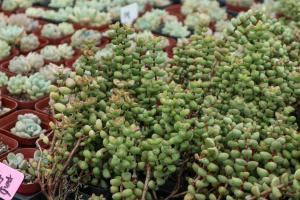Introduction
With the growing concern for the environment, many companies are turning towards biodegradable plant pots as a solution for reducing waste in the horticultural industry. Biodegradable plant pots are made from natural materials that can be broken down and recycled back into the environment. In this article, we will discuss the advantages and disadvantages of using biodegradable plant pots.
Advantages of biodegradable plant pots
One of the biggest advantages of using biodegradable plant pots is that they are eco-friendly. They are made from natural materials that are biodegradable, which means they can decompose naturally in the environment. This reduces the amount of plastic waste that is produced and disposed of in landfills.
The second advantage is that biodegradable plant pots are sustainable. Because they are made from natural materials, they are renewable and can be grown again and again. This reduces the need for plastic or other non-renewable materials, which can be more expensive to produce and have a bigger impact on the environment.
The third advantage of biodegradable plant pots is that they promote healthy plant growth. Because the pots are made from natural materials, they have good water retention and drainage, which is essential for healthy plant growth. This can lead to better yields and stronger, healthier plants.
Disadvantages of biodegradable plant pots
One of the biggest disadvantages of biodegradable plant pots is that they can be more expensive than traditional plastic plant pots. This is because the production process is more complicated and the materials used are often more expensive.
The second disadvantage is that biodegradable plant pots have a shorter life span than plastic pots. They can only last for a few months before they start to break down, whereas plastic pots can last for years. This can be problematic for plants that need to be transplanted or repotted, as the pots may not hold up for multiple use.
The third disadvantage is that biodegradable plant pots may not be as strong as plastic pots. This can be problematic for delicate plants or plants that require more support. Biodegradable pots may break or tear when moved or transferred, which can damage the plants.
Conclusion
Overall, there are both advantages and disadvantages to using biodegradable plant pots. While they are eco-friendly and sustainable, they can be more expensive and have a shorter lifespan than plastic pots. It’s important to weigh these factors when deciding whether or not to use biodegradable plant pots in your gardening or horticultural projects.

 how many times do yo...
how many times do yo... how many planted tre...
how many planted tre... how many pine trees ...
how many pine trees ... how many pecan trees...
how many pecan trees... how many plants comp...
how many plants comp... how many plants can ...
how many plants can ... how many plants and ...
how many plants and ... how many pepper plan...
how many pepper plan...






























